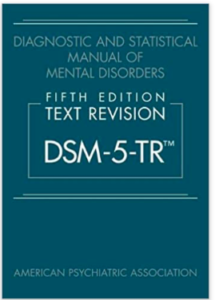 Williams v Kincaid, 2022 WL 3364824 (4th Cir. August 16, 2022) is not the first case to consider gender dysphoria as a disability, and marks the second time the Fourth Circuit has considered the difference between gender identity and gender dysphoria.¹ However, as a circuit court opinion holding that gender dysphoria can be a disability covered by the ADA it has special prominence, not only because of its possible effect on individuals suffering from gender dysphoria, but also because of what it teaches about interpreting the ADA in light of changing science and technology and the possible need for updating the ADA’s definitions in light of those changes.
Williams v Kincaid, 2022 WL 3364824 (4th Cir. August 16, 2022) is not the first case to consider gender dysphoria as a disability, and marks the second time the Fourth Circuit has considered the difference between gender identity and gender dysphoria.¹ However, as a circuit court opinion holding that gender dysphoria can be a disability covered by the ADA it has special prominence, not only because of its possible effect on individuals suffering from gender dysphoria, but also because of what it teaches about interpreting the ADA in light of changing science and technology and the possible need for updating the ADA’s definitions in light of those changes.
ADA Internet
ADA regulations and the reality of website accessibility
By Richard Hunt in ADA - drive-by litigation, ADA - serial litigation, ADA - Standing, ADA Internet, ADA Internet Web, ADA Website Accessibility Tags: ADA defense, Gomez, Judge William Orrick, Laufer, Trinitas Cellars, WCAG, website accessibility

Trinitas Cellars Logo
It has long seemed that the best way to both create accessibility for websites and to tame the industrial ADA litigation monster is to have a technical regulatory standard. Most recently a group of U.S. Senators has written to the Attorney General urging a resumption of the regulatory process that was ended under President Trump.¹ Before the process was ended the proposed regulations were essentially the familiar Web Content Accessibility Guidelines 2.0; the same guidelines that have been adopted as regulations for government websites under Section 508 of the Rehabilitation Act. Another group of members of Congress tried to accomplish the same thing with legislation that would have added a new title to the ADA and require this kind of regulation.²
I thought for a long time that some kind of regulatory solution was needed, but my experience defending lawsuits concerning physical accessibility ADA suits has persuaded me that a regulatory approach that essentially makes some version of the Web Content Accessibility Guidelines legally binding – which is what the abandoned DOJ regulations did – will neither improve website accessibility nor tame the beast.³ Instead we need regulations that adopt a functional approach to accessibility – the kind of approach used by Judge William Orrick in the recent decision in Gomez v. Trinitas Cellars, LLC, 2022 WL 2194658 (N.D. Cal. June 17, 2022).
Judge Orrick was considering a Motion to Dismiss that he had converted to a motion for summary judgment, a procedure that allows consideration of evidence beyond the words of the Complaint. The defendant attacked the plaintiff’s standing to sue, which is a real issue for this plaintiff (4), but the most interesting part of the decision concerns the defendant’s claim that the website was in fact accessible. Judge Orrick’s approach to that question shows just how similar issues should be approached in every ADA lawsuit.
Mr. Gomez’s first claim was that some of the images on the website did not have a meaingful text equivalent and could not be “seen” by a visually impaired user with screen reading software (SRS). The first such image was the logo of the business, which the defendant admitted had a meaningless text label. Judge Orrick found that this did not violate the ADA because the plaintiff could not explain how the lack of a label would deny him the full and equal enjoyment of the business or deter him from visiting it. As Judge Orrick observes, “it may have been ideal for that banner to be readable, but that does not mean it shows a cognizable injury or violates the ADA.” He applied the same analysis to social media logos that were not SRS readable: “neither Gomez’s opposition nor his supplemental brief draws even an arguable connection between this lack of readability and a barrier that would matter to the ADA.” This is how the ADA should be applied to technical accessibility issues. The ADA’s guaranty is that no person will be denied: “full and equal enjoyment of the goods, services, facilities, privileges, advantages, or accommodations of any place of public accommodation.” (5) Symbols and logos that have no functional purpose cannot be fit within the kind of things whose enjoyment the ADA protects.
This was not a blanket finding that every technical problem was not a violation. The Court recognized that menu items had to be accessible for the website to be usable at all, but it found as a matter of fact that the menus were accessible and could be read by SRS. Gomez’s last claim, concerning the contrast between text and background, was rejected because contrast does not matter to SRS, which is reading code, not visible text. Gomez was not blind – he only suffers from very poor vision – but his testimony was that he used SRS to navigate websites, so low contrast did not matter to him even though it might matter to a plaintiff with poor vision who did not rely on SRS.
Two principles can be found in Judge Orrick’s opinion. First, Title III of the ADA is violated only if some element of the website interferes with its practical use by a person with a disability. Second, an individual does not have standing to sue unless they were personally hindered in their use of the website even though some defective element is connected to their kind of disability. Any new regulations from DOJ should follow these principles and look at accessibility in practical rather than technical terms.(6) Instead of a “gotcha” list of technical requirements that no complex website can possibly meet, regulations should emphasize the purpose of the website, what users expect from it, and whether those expectations are met for individuals with a disability. For most commercial websites the purpose is to sell or rent something, and the question should be whether a person with a disability can accomplish that purpose with reasonable facility. From a litigation standpoint the plaintiff’s burden should be to plead the existence of a problem with the function of the website, not merely that logo or image lacks meaningful alternative text.
And while DOJ is thinking about meaningful regulations directed toward improving accessibility rather than generating meaningless litigation the courts might consider adopting Judge Orrick’s approach to cases involving physical accessibility. I’ve already pointed out the absurdity of so called “stigmatic injury” in Title III ADA cases.(7) Purely objective standards for accessibility have the advantage of being objective, but they suffer the disadvantage of being unachievable in practice. Plaintiffs should be required to plead and prove not just a technical violation, but also that they were personally suffered some kind of excessive inconvenience (8) in their full and equal enjoyment of a facility in order to plead or prove a Title III violation. This is the direction courts seem to be moving; it just needs to be incorporated in any new regulations defining accessibility.
+++++++++++++++++++++++++++++++++++++++++++++
¹ See, letter dated June 10, 2022 from Senators Tammy Duckworth and Richard J. Durbin to Attorney General Merrick Garland. https://www.judiciary.senate.gov/imo/media/doc/22.06.10%20-%20LETTER%20-%20Duckworth-Durbin%20letter%20to%20DOJ%20on%20web%20accessibility%20-%20FINAL.pdf
² See my blog The Online Accessibility Act of 2020 – does it do what it needs to do?
³ Seyfarth Shaw recently reported that ADA filings are down by 22% in the first half of 2022. 2022 ADA Title III Mid-Year Federal Lawsuit Filings Drop 22% Compared to 2021. The most likely explanation is that recent prosecutions of some of the most notorious ADA serial filers and the Laufer standing decisions from the 5th and 10th Circuits have discouraged new filings. See, A short sharp shock – the end of the beginning for serial ADA lawsuits? and Laufer v Looper – the death of tester standing, and not just in ADA cases. This does not mean that misuse of the ADA no longer exists. Some law firms that engage in serial filing have now lowered their monetary demands and are sending demand letters before filing suit in an effort to make a quick settlement more attractive to defendants who would otherwise be tempted to fight back. The most extreme versions of this kind of ADA exploitation have criminal consequences, see https://www.justice.gov/usao-sdny/pr/attorney-pleads-guilty-filing-fraudulent-lawsuits-under-americans-disabilities-act. It is worth noting that the firms now sending demand letters instead of filing suit will generally not name their supposed client. This avoids criminal conduct like that prosecuted by DOJ, which involved using names without permission, but leaves open the question of whether the firm has a client at all. In the 40+ years I have been a litigator I have had thousands of clients receive demand letters, but the only times I’ve seen a demand letter that did not name a plaintiff have been demand letters concerning ADA website accessibility.
(4) A number of cases filed by Mr. Gomez have been dismissed just based on a lack of standing. See, e.g.,
Gomez v. Wunderlich, 2022 WL 2119120, at *1 (N.D. Cal. June 13, 2022) and Gomez v. Tribecca, Inc., 2022 WL 1469504, at *4 (C.D. Cal. May 10, 2022).
(5) 42 U.S.C. §12182(a).
(6) This kind of functional analysis will be incorporated in the upcoming version of the WCAG, version 3.0, which will measure conformance based more on practical effect than strict technical compliance. See, https://www.w3.org/TR/wcag-3.0-explainer/
(7) See, Stigmatic injury and how the 11th Circuit got in wrong in Laufer v Arpan
(8) Excessive inconvenience is an appropriate standard because disability by definition imposes some limits on the full and equal enjoyment of a facility. Even with perfect technical compliance a facility will be less convenient for a person with a disability than for a person without any disability.
DOJ Guidance on Website Accessibility and the ADA – it still could be worse
By Richard Hunt in Accessibility Litigation Trends, ADA Internet, ADA Internet Web, ADA Web Access Tags: ADA defense, DOJ Guidance on Website Accessibility, website accessibility
On March 18 the Department of Justice published its Guidance on Web Accessibility and the ADA. Anything that helps businesses understand their ADA obligations is helpful, but the fact that this Guidance was posted on the beta site of ADA.gov tells you that even DOJ has low expectations. Those low expectations are justified because the Guidance doesn’t define website accessibility and therefore does nothing to help businesses have certainty about their compliance with the law. More
Quick Hits – Who needs the Grinch when you’ve got Bowser?
By Richard Hunt in Accessibility Litigation Trends, ADA - drive-by litigation, ADA - Hotels, ADA - serial litigation, ADA Internet, ADA Internet Web, FHA, Internet Accessibility Tags: ADA defense, ADA personal jurisdiction, FHA Defense, Legal Ethics Today, recovery homes, sober living, Uber Technologies, William Goren
 Almost everyone who ever was, had or has a child probably knows Bowser, the character from many Nintendo games. In Mario Party he often offers “gifts” that don’t always (or ever) turn out to be something you might want. Recent developments in accessibility law are, as usual, a mixed bag. Here’s what I found underneath the tree. Bwahahahaha!
Almost everyone who ever was, had or has a child probably knows Bowser, the character from many Nintendo games. In Mario Party he often offers “gifts” that don’t always (or ever) turn out to be something you might want. Recent developments in accessibility law are, as usual, a mixed bag. Here’s what I found underneath the tree. Bwahahahaha!
A shiny new article about the ethics of communication.
My partner, Jeanne Huey and I collaborated on an article about ABA Formal Opinion 500 that was published by the American Bar Association Litigation Section Professionalism and Ethics Committee, but is easiest to find at her blog, Legal Ethics Today. Communication with those who are disabled is a statutory obligation under the ADA for all businesses open to the public as well as the Fair Housing Act for housing providers. For lawyers it is an ethical obligation as well. More
Understanding ADA Website Accessibility Litigation
By Richard Hunt in Accessibility Litigation Trends, ADA Internet, ADA Internet Web, ADA Website Accessibility Tags: ADA defense, WCAG 2.1 AA, website accessibility
 My new paper “Understanding Website Accessibility Litigation” is available now for download. This paper is for businesses who want to understand this highly publicized form of litigation without jargon and legalese. Here’s a summary of what the paper will explain; a link to view the entire paper appears below.
My new paper “Understanding Website Accessibility Litigation” is available now for download. This paper is for businesses who want to understand this highly publicized form of litigation without jargon and legalese. Here’s a summary of what the paper will explain; a link to view the entire paper appears below.
It isn’t clear which business websites are covered by Title III of the ADA. It may cover all websites that are available to the public or it may be limited to websites that have some connection to a physical place of business. Just what that connection must be is also uncertain.
It isn’t clear what it takes for a website to meet the requirements of Title III of the ADA. WCAG in its current version at success level AA is the best available technical standard, but it does not have the force of law. Conformance to its requirements may not be sufficient, and non-conformance may not mean the website violates the ADA.
Not all lawsuits and demands are the same with respect to the threat they pose. Lawsuits and demand letters come from law firms that range from very sophisticated to incredibly ignorant. The only general advice that applies to all such lawsuits and demands is that before adopting any legal or business strategy you must know about the law firm and its history of website litigation.
Different judges can have very different views of what the ADA requires and how different defenses apply. Just as you can’t decide on legal strategy without knowing about the law firm that filed suit, you can’t decide on a legal strategy without knowing what your specific judge has done in the past with similar ADA lawsuits.
Software testing is not adequate to find all the accessibility problems a website may have. Only user testing by trained users can locate all the accessibility problems in a website.
No widget, plug-in or overlay can make a website fully accessible. These products can, at best, improve a small subset of common problems but often do so at the expense of making other parts of the website inaccessible.
Accessibility and good design go hand in hand. Making a website easy to use for non-disabled users will almost always solve common accessibility problems. Good design should b the primary consideration in website development.
To open the paper in your browser click this link: “Understanding Website Accessibility Litigation.”

